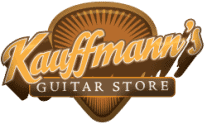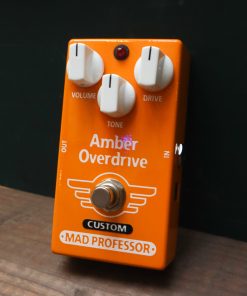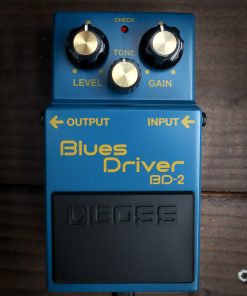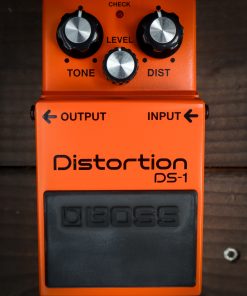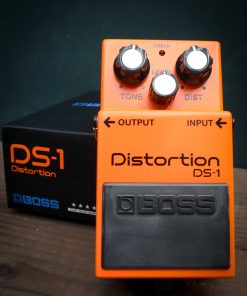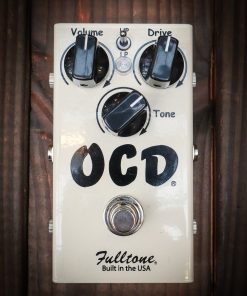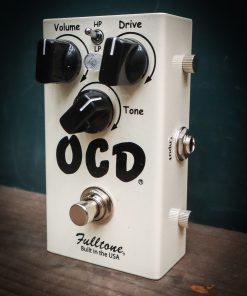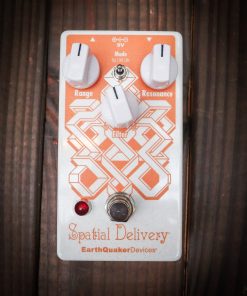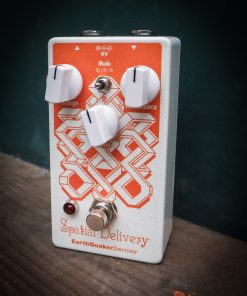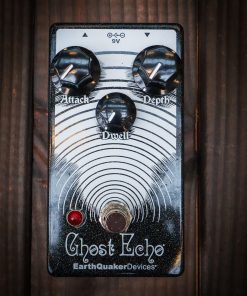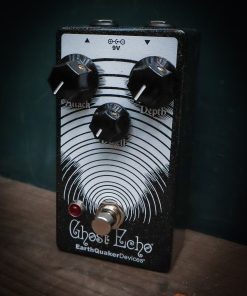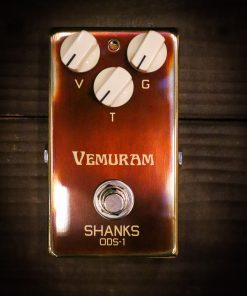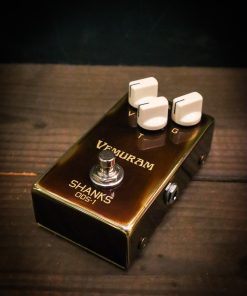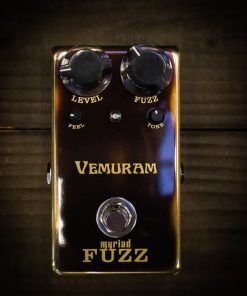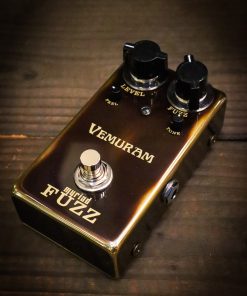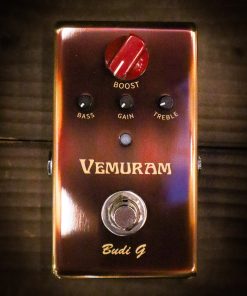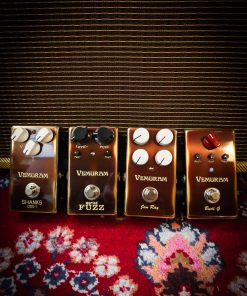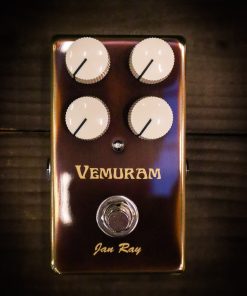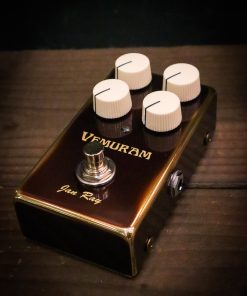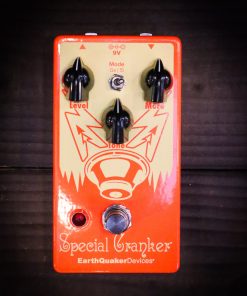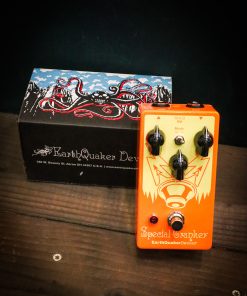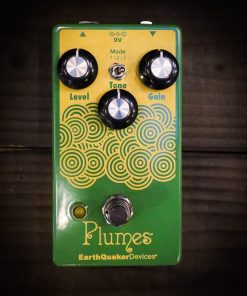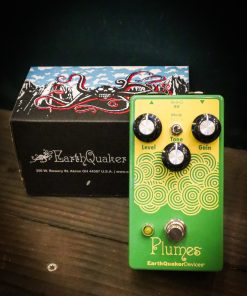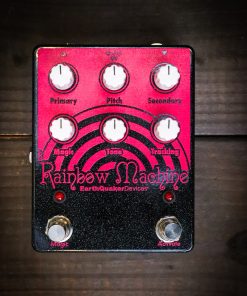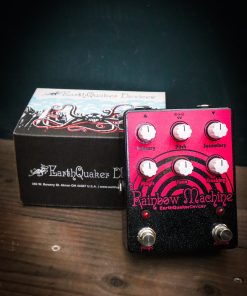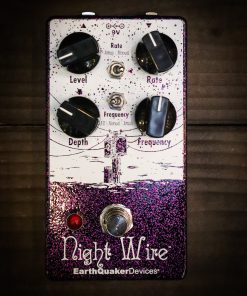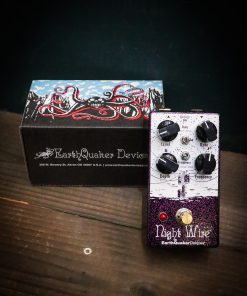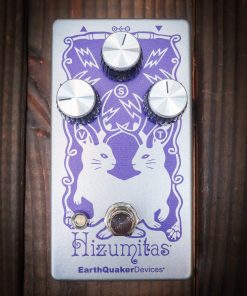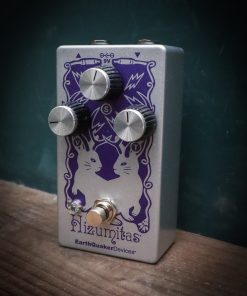Find the best guitar pedals for you
As guitarists, we are all familiar with the endless pursuit for the perfect sound. Chances are that if you have found the perfect guitar and amp set up for you, then the next logical step is to figure out what goes in between; guitar pedals. At Kauffmann’s Guitar Store we strive to help you discover the best guitar pedals for YOU. We believe that this is not only based on specific specs or hardware, but also the feeling it gives you when you plug it in and play.
About guitar pedals
Guitar pedals, otherwise known as effect pedals or stompboxes, are effect units that are designed to be placed on the floor - by itself or alongside others in a pedal board - and be switched on and off with the user’s feet. In most cases, guitar pedals are made to produce a single effect, with the simpler guitar pedals having a single footswitch, one to three knobs (potentiometers) for adjusting the effect, gain or tone, and a simple display to signal whether the effect is on or off. The more complex guitar pedals have multiple footswitches, knobs, additional switches, and a more complex display screen to indicate which effect, and in which way, is activated. By combining two or more guitar pedals together you can form an effects chain, which will give more complex effects depending on the chain configuration.
The best guitar pedals
If you’re just getting yourself familiarized with guitar pedals then it can seem quite overwhelming at the beginning. We’ve all been there. Especially when you see your icons operate what seems to be 20 unique effect pedals at once. Which guitar pedals should you buy first, and which are the best guitar pedals? Much like for any instrument, the best guitar pedals don’t really exist, as this is super subjective to what each individual person likes, or which sound they are looking to create. In other words, you have to find the best guitar pedal for YOU. And we’re here to help with that, so if you have any questions please do not hesitate to reach out. With that being said, there are certain guitar pedals which make up the core of your pedal set up. Here are a few to help you get started:
Volume pedals
Yes, your guitar already has a volume knob, but by using a stereo volume pedal you will be able to further expand the tonal possibilities of your setup.
Wah-Wah pedals
You probably heard it being used by legends like Jimi Hendrix, Slash, or Jerry Centrell (to name a few). The Wah-Wah effect is a Q filter which is controlled via a pedal. The vocal-like effect is produced by having a Q parameter switching back and forth, which ‘opens’ your guitar’s voice, or narrowing it down by removing treble frequencies.
Overdrive pedals
The days of having to crank up your amplifier to max in order to achieve that sweet sweet distortion effect are long gone. Today, overdrive pedals allow you to drive every amp into overdrive (at any volume), and choose the amount of gain which will shape the tone as you desire.
Distortion pedals
Didn’t you just say that overdrive pedals produce distortion effects? Yes, correct. Are distortion and overdrive pedals the same? Nope. The effect of a distortion pedal is much more audible, and results in a much louder, harsher and often very different sounding distortion sound.
Compressor / EQ pedals
If you're a guitar player who likes to play loud and soft, then you should get your hands on a compressor pedal as it allows you to raise the soft parts while lowering the loud parts of your sound. This way you will be able to achieve a sound that is suited for most applications, but won’t make your ears bleed. Another way of putting it is an ‘automated’ volume control.
An EQ pedal is needed when you have an amp with limited tone-shaping control, or a problematic guitar, as it allows you to shape the sound going inside the amp as a volume/eq boost. Or as a creative way to alter the way your guitar sounds. Up to you.
Chorus, delay, and reverb pedals
Once you are done shaping your sound, it is time to add some depth to it. This can be achieved by adding these types of ‘ambiance’ pedals to your set up.
Loop pedals
If you’re into experimenting with different sounds, then a loop pedal would be a good addition to your set up. A loop pedal allows you to create instant recordings of the sounds you play, and play them back in real-time.
